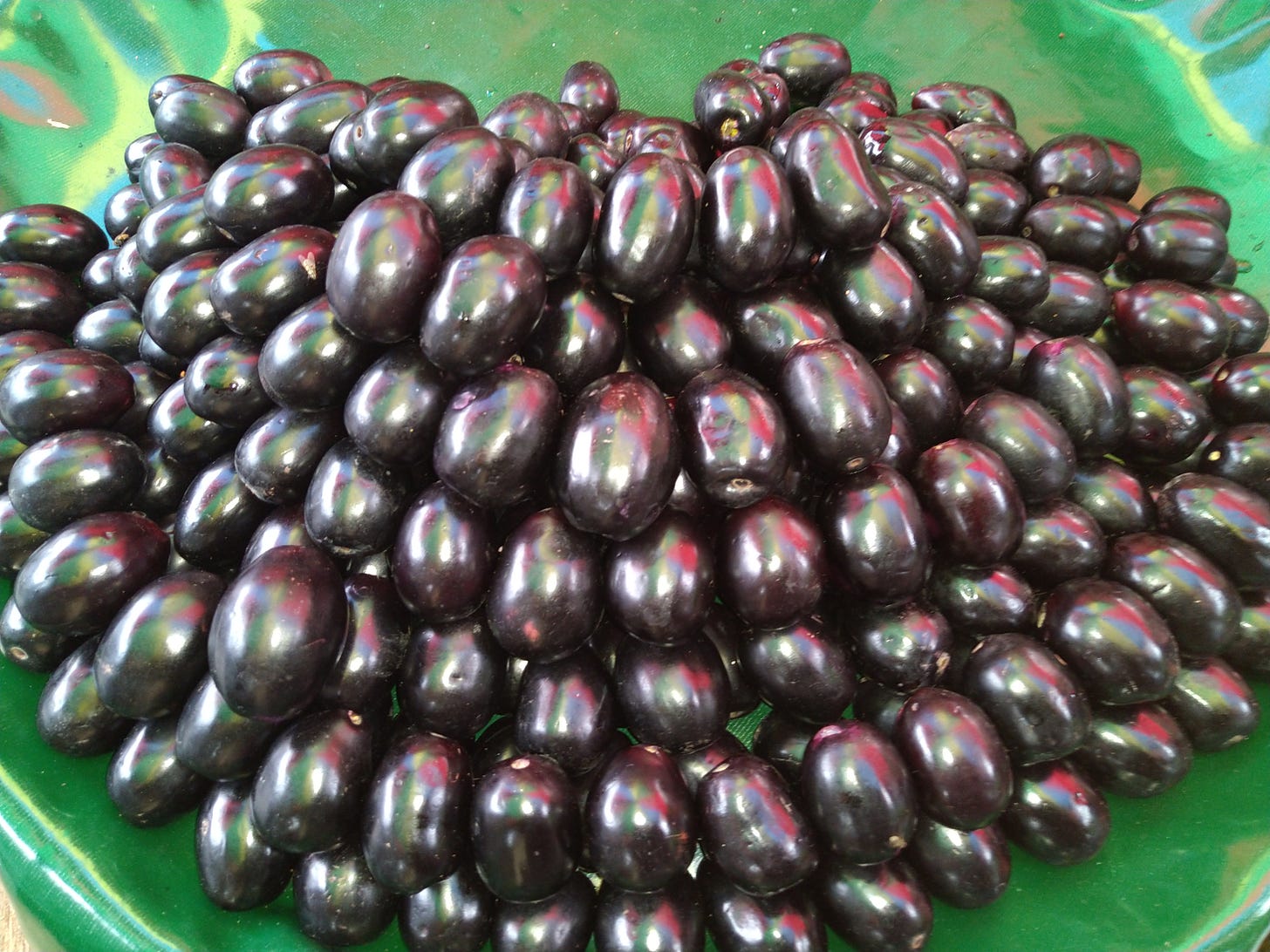Summer in India portends high temperatures and many fruits such as mangoes, jackfruits, cashews, ice apple, and Jamun, which arrive in the market for a few months. Jamun is a native Indian fruit and popular throughout the country for its many health benefits. Though Jamun shares its name with the popular Indian dessert, Gulab Jamun, Jamun is an amazing fruit with a rich history and comprehensive health benefits, making it a good choice of any diet.
Ancient Indian writing refers to India as Jambu Dwipa or an island of numerous Jamun trees. All Jamun tree parts from the fruit pulp, seed, bark, leaves, and roots have medicinal properties, which Ayurvedic physicians have used for millennia. Even today, you can find Indians using homemade Jamun remedies or relying on Jamun product brands for numerous health conditions. Unani and Chinese systems of medicine also rely on Jamun's curative properties.
Jamun is a native tree of many Asian countries that bears green oblong fruits that first turn pink and then shades of purple as they ripen. So when you see a fully ripe Jamun, you may think it is black, but it is dark purple and succulent when ripe.
Some weeks ago, on a visit to the Matunga market of south Mumbai, I bought large Jamuns and enjoyed their sweet, astringent taste back home. Indians grow up familiar with Jamun trees common on streets and with the fruit falling on the ground offering a sweet treat to people below the tree.
Fruit sellers get Jamun from people who climb on Jamun trees and carefully harvest them to prevent squishing the delicate fruit.
Jamun comes in two sizes, the smaller and larger variety from tall trees with flaky bark. Jamun has leathery leaves. Jamun varieties also vary in the pectin or the fiber (that bulks up jams), with the whitish flesh varieties having more and the purplish flesh ones containing less pectin.
Ripe Jamun is succulent and has a sweet-sour taste with an astringent undertone. Therefore, you only eat the purple skin and purplish-white pulp between the skin the seed and discard the seed, which is bitter and astringent. However, Jamun seeds have numerous beneficial properties, and you can use them for home remedies by sun-drying and grinding them to a powder.
Jamun is a diuretic and also helps to cure scurvy. Jamun's properties help people maintain their skin, mouth, heart, bone, digestive and excretory systems.
Jamboline and jambosine in Jamun help regulate blood sugar in people with diabetes by slowing the release of sugar. Additionally, Jamun fibers help improve digestion and overcome many digestive system ailments such as constipation, diarrhea, dysentery, stomach ache, and flatulence. Jamun is rich in fructose and glucose and deficient in sucrose.
Though Jamun fruit is suitable for people with diabetes due to a low glycaemic index, Ayurvedic physicians use the seeds and leaves for treating diabetes.
Jamun's constituents, its tannins, and malic, gallic, oxalic acids make it strongly anti-microbial and help protect people from microbial infection.
Jamun is useful in oral hygiene and health as people can use its dry leaves as a tooth powder that helps prevent gum bleeding and infection. In addition, a Jamun bark decoction helps to treat mouth ulcers and prevents throat infection and bad breath.
The high potassium levels of Jamun help people eating it to maintain good heart health through prevention of arterial hardening and high blood pressure.
Jamun's iron content helps in improving blood hemoglobin, better eyesight, and skin tone. Anemic people can choose Jamun for its high iron content and improve their blood through purification, higher red blood cells, and hemoglobin. People who are weak and have fatigue feel energetic by consuming Jamun.
Vitamin C and antioxidants in Jamun also contribute to better skin health and hair growth. In addition, Jamun's vitamin C levels also contribute to good teeth, bones, and cartilage and preventing cough, cold, and bouts of asthma.
One of my favorite Jamun dishes is the Naturals Jamun ice cream flavor they serve in the Mumbai region. Naturals Jamun ice cream relieves you from having to eat each fruit by separating the skin. This flavor resembles black currant but has small pieces of Jamun skin, which helps you to distinguish it from black currant. The Jamun ice cream also is astringent in keeping with the property of the fruit.
You can make Jamun juice by combining it with ginger, black salt, chaat masala, and honey, though you can only do so in summers when the fruit is available in India. Fresh Jamun juice (without additives) is a good skin toner by its astringency. In addition, Jamun pulp with curd and rose water makes a good face pack that is helpful to manage oily skin and reduce pimples.
While eating Jamun as fruit is a common Indian summer pastime, you can also make juice, jams, smoothies, and salads out of it.
Jamun jam is a simple way to preserve the fruit. Many Indian homes prepare a powder or choorna out of Jamun seeds and use it. In addition, many brands' market products contain Jamun bark, leaves, and roots as health supplements or cures in tablet or capsule form in India.
Jamun is a unique Indian fruit low on calories and high on fiber and thus an ideal fruit. It is rich in fiber, carbohydrates, proteins, vitamin A and C, iron, calcium, magnesium, and potassium minerals. Modern nutritionists favor phyto or plant chemicals, and Jamun is a treasure house of numerous such compounds which beneficially impact the consumer's health. Weight watchers can rely on Jamun's properties to fit into any diet very easily. Jamun improves metabolism helping to use energy from food, prevents water retention (that contributes to weight), and controls overeating as it satiates easily.
Jamun is naturally pesticide-free as some of the fruit is from avenue trees. Therefore, even farmers who cultivate it do not apply chemical treatments against the crop's pests and diseases.





